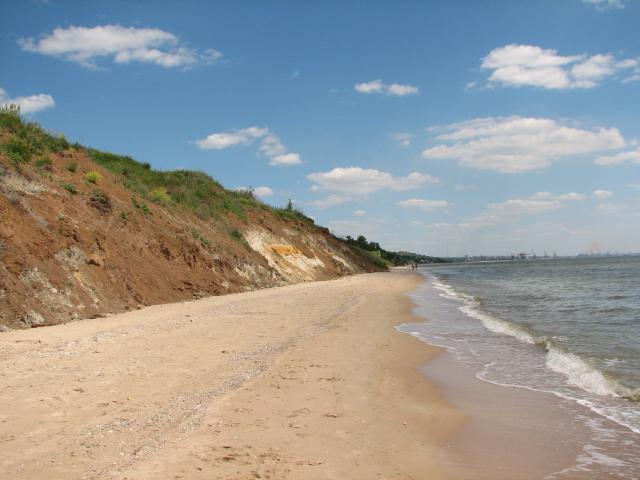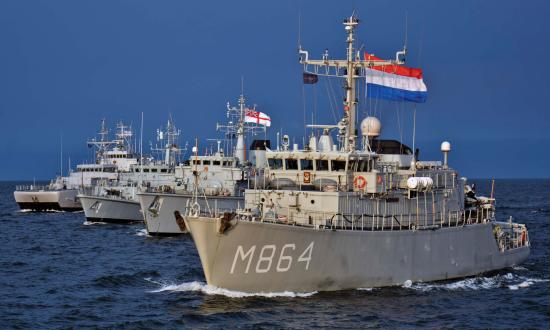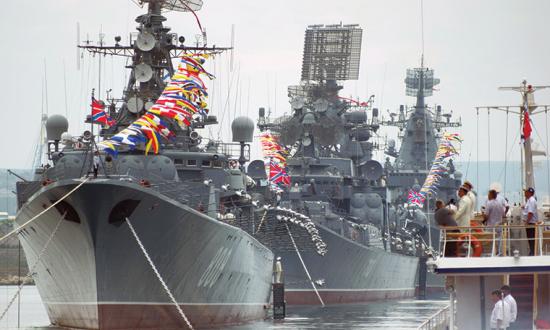Defense and intelligence professionals are discerning possible war plans should Russia invade Ukraine. A Ukrainian assessment in late November predicted Russia might invade via multiple land axes coming north from Belarus towards Kiev, west from Russia towards the Dnepr River, and south from occupied Crimea towards Kherson Oblast, which controls a fresh-water canal to the peninsula. Chief of Ukrainian Defense Intelligence, Brigadier General Kyrylo Budanov, also predicted that a Russian invasion would include amphibious assaults on the ports of Odessa and Mariupol. How feasible is that threat?
Russia’s Black Sea Fleet could establish sea control, the first prerequisite of amphibious operations, and the 810th Guards Naval Infantry Brigade would serve as its landing force. The Fleet’s amphibious lift is provided by the 197th Assault Ship Brigade with three Alligator- and four Ropucha-class landing ships. With reinforcement by the Ropucha-class landing ships Korolev and Minsk from Russia’s Baltic Fleet, this provides an amphibious lift capability of approximately two naval infantry battalion tactical groups (BTGs).1 Eight smaller amphibious craft moved last year from the Caspian to the Black Sea. However, this only increases the Black Sea Fleet’s amphibious lift capability by approximately four tanks and six armored fighting vehicles—a two platoon-sized mechanized company.
Several factors limit the Black Sea Fleet’s amphibious options. First, Ukraine’s coast is characterized by high ground and cliffs to the shoreline with limited beach exits and has few suitable beaches for a mechanized amphibious assault force. Coastal areas not bounded by cliffs are urbanized. These towns, if properly defended, would be difficult to fight through for a landing force going immediately from a beach assault to urban combat in a matter of meters.
Hydrography restricts operations against Mariupol. Vessels must first transit the Strait of Kerch, a narrow passage requiring pilot assistance, and then the Sea of Azov, the world’s shallowest sea with an average depth of 8 meters.
The next challenge is weather. The Sea of Azov’s winter climate is influenced by the Siberian Anticyclone. January temperatures average between -1 and -5 °C and can decrease to -30 °C due to Siberian winds. The sea’s low salinity and shallowness favor the formation of ice during the winter. Rough seas, ice along beaches, and wind chill conditions have hindered amphibious operations here before. A Force 8 gale and -20 °C temperatures stalled a Soviet amphibious operation across the Strait of Kerch in December 1941.2
Similar challenges are found near Odessa. Its coastline consists of narrow beaches abutting sand-cliffs, but there are some limited landing sites to its northeast between Dofinivka Beach and Grigorevskii Beach near the town of Paluba—approximately 18-25 road miles from Odessa. An estuary at Paluba contains Odessa’s industrial port with docking facilities for cargo ships and a commercial fuel storage capacity. This would provide a protected anchorage and wharfs for vessels to off-load supplies.
Rapid generation of forces ashore and logistics are the linchpins of any amphibious operation. Two Russian BTGs landing northeast of Odessa could secure a beachhead but not take the city of a million. Depending on beach unloading times, weather, and reloading times back at Sevastopol, landings ships would need over 24 hours after H-Hour to bring a second wave of troops to the beachhead. This cycle must repeat itself again before the entire 810th Guards Naval Infantry Brigade with army reinforcements has landed. Its advance would depend on the rate that other shipping brings and unloads supplies to sustain the force.
Clausewitz’s “friction” in war lurks close by any amphibious operation. For the first week, Russian naval amphibious ships built between 1966 and 1990 would have to operate at a nearly continuous pace with hardly any time to rest men or machines. Mechanical breakdowns, storms, difficulties loading or unloading ships, groundings and collisions are all possible elements of friction. Ukrainian air and missile strikes could add to that friction. With an amphibious shipping capacity in single digits, the loss of one ship is a major blow. The loss of two or more would be catastrophic.
To control the air and prevent such losses, Russia would need to keep a continuous combat air patrol over the beachhead. The flight distance to Odessa from western Crimea is within range of Russian combat aircraft but leaves limited loiter time. A continuous stream of fighters would be taking off, circling the fleet, returning, landing, refueling, and rearming. It is an open question how long the Russian military could generate the sorties to support this.
Vagaries of weather and sea conditions, restrictions of hydrography and topography, limitations of amphibious lift, difficulties maintaining air superiority, and challenges of logistics all point to the risky nature of any Russian amphibious operation in the Black Sea. It would only take a few elements not in their favor to spell disaster and make any Russian amphibious operation against Ukraine a “Beach Too Far.”
1. This estimate is based on the results of a study by the Center for Strategic and International Studies (CSIS), Are Current Russian Expeditionary Capabilities Capable of a Coup de Main in Sweden?, 30 September 2021, by Suzanne Freeman, which estimated that four Ropucha class landing ships could carry one Naval Infantry BTG. Considering the vagaries of combat loading, I used this estimate to determine that six Ropucha-class and three Alligator-class landing ships could lift approximately two naval infantry BTGs.
2. Robert C. Citino, Death of the Wehrmacht: The German Campaigns of 1942, University Press of Kansas, 2007, page 65.







